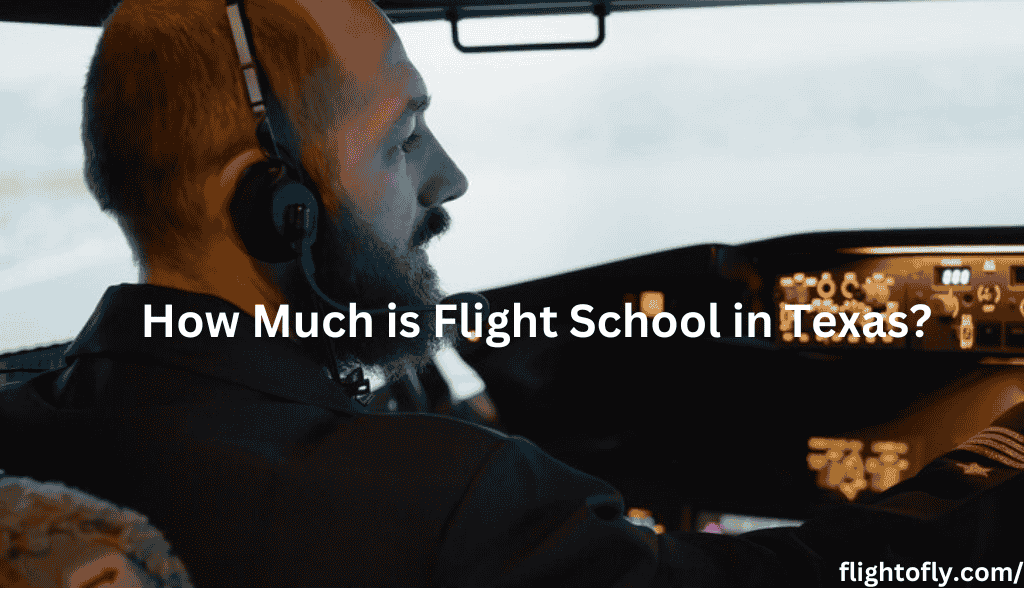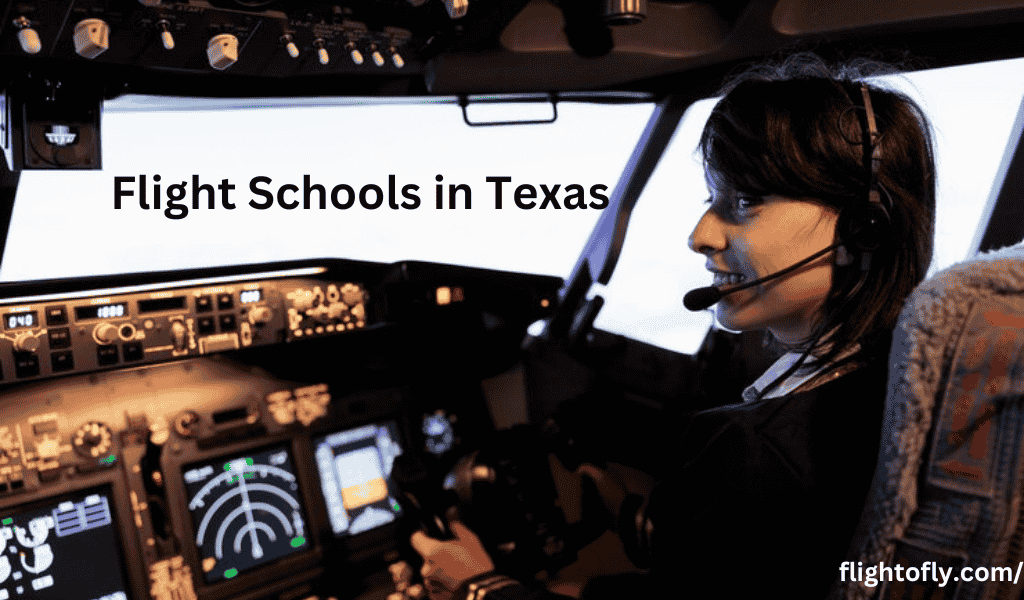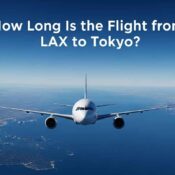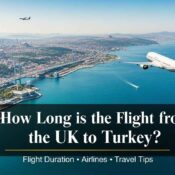
How Much is Flight School in Texas? Licenses and Training Program Cost
Flight school in Texas can cost anywhere from $5,000 to $100,000, depending on the type of license and training program. For instance, a Private Pilot License (PPL) might cost $8,000–$15,000, while an Airline Transport Pilot License (ATP) can range from $50,000–$100,000.
Becoming a pilot is an incredible dream and a rewarding career path, but it requires both time and financial commitment. Whether you’re aiming to fly for leisure or pursuing a career as a commercial pilot, the cost of training depends on the type of license, the number of flight hours required, and the flight school you select. Texas offers a variety of flight schools with programs tailored to different goals and budgets.
Check: How Long is a Flight to Africa? Everything You Need to Know
Types of Pilot Licenses and Their Costs
Flight schools in Texas offer various training programs tailored to different career paths or personal goals. Here’s a detailed breakdown of the most common programs and their associated costs:
| Training Program | Estimated Cost |
| Sport Pilot License | $5,000 – $8,000 |
| Private Pilot License | $10,000 – $15,000 |
| Instrument Rating | $8,000 – $12,000 |
| Commercial Pilot License | $18,000 – $25,000 |
| Multi-Engine Add-on | $3,500 – $5,000 |
| Certified Flight Instructor (CFI) | $4,000 – $6,000 |
- Sport Pilot License: This is the most basic license, ideal for recreational flying in good weather. It’s also one of the cheapest options, requiring fewer flight hours.
- Private Pilot License: This license allows you to fly almost anywhere and is a common starting point for aspiring professional pilots. Costs range from $10,000 to $15,000, depending on the school and how many flight hours you need.
- Instrument Rating: Adding this certification lets you fly in poor weather using instruments. It’s an essential step for those pursuing commercial aviation.
- Commercial Pilot License: This license enables you to earn money as a pilot. It’s more expensive due to the higher flight hour requirements and additional training.
- Multi-Engine Add-on: If you plan to fly planes with more than one engine, you’ll need this add-on. Though it’s a shorter program, the specialized training costs between $3,500 and $5,000.
- Certified Flight Instructor (CFI): This is for pilots who want to teach others. It’s a great way to gain experience and log hours for relatively low costs.
Factors That Affect Flight School Costs
The price you pay for flight school depends on various factors. Understanding these can help you make informed decisions about where and how to train.
1. Type of Training Program
Each license or certification requires different levels of training and flight hours. A sport pilot license is quicker and cheaper to earn, while advanced licenses like a commercial pilot license take significantly more time and resources.
2. Flight Hours Required
Every license has a minimum flight hour requirement set by the FAA. For example, a private pilot license requires at least 40 hours, but many students take 50–70 hours to feel prepared. Each additional hour of flight time adds to your costs.
3. Location and Facilities
Schools in urban areas or with modern aircraft fleets often charge more than rural schools or those using older planes. While paying more can sometimes mean better equipment and instructors, it’s worth comparing costs and value at different schools.
4. Aircraft Type
Training on advanced or newer aircraft costs more. Single-engine planes like a Cessna 172 are the most common and affordable, while multi-engine or glass-cockpit aircraft add to expenses.
5. Additional Fees
Flight schools often charge extra fees for medical exams, books, exams, and aircraft rentals. These hidden costs can add up, so ask for a detailed cost breakdown before enrolling.

Example Flight Schools in Texas and Their Costs
Here are some well-known flight schools in Texas and the costs of their programs:
1. U.S. Aviation Academy (Denton, Texas)
- Private Pilot License: Around $12,000
- Accelerated Full Program (Private to Commercial): Starts at $90,000
This academy offers flexible programs for beginners and professionals. Their accelerated training helps students earn multiple certifications in a shorter time.
2. ATP Flight School (Dallas, Texas)
- Airline Career Pilot Program: $96,995
ATP is a leading school for aspiring airline pilots. Their program includes everything from private pilot training to commercial certifications and guarantees students an interview with partner airlines.
3. In The Pattern (Denton, Texas)
- Private Pilot License: Starts at $10,000
- Multi-Engine Add-on: Around $4,000
Known for its personalized training, this school provides a more affordable option for students.
Additional Costs to Consider
Aside from tuition, students should plan for the following expenses:
- Medical Exam: $75–$200, required to confirm your physical fitness for flying.
- Study Materials: $500–$1,000 for textbooks, online courses, and flight computer tools.
- FAA Written Exam: $150, a mandatory test to move forward in your training.
- Checkride Fee: $500–$800 for the final practical exam conducted by an FAA examiner.
Financing Options and Scholarships
Flight training can be expensive, but several financing options and scholarships are available to help ease the burden:
- Loans: Many schools partner with financing companies to offer student loans. These loans cover tuition and often include flexible repayment options.
- Scholarships: Organizations like AOPA (Aircraft Owners and Pilots Association) and EAA (Experimental Aircraft Association) provide scholarships for aspiring pilots. These can cover part or all of your training costs.
- Work-While-You-Train Programs: Some schools hire advanced students as flight instructors, allowing them to earn money while gaining experience.
Tips to Save on Flight Training Costs
- Choose a Local School: Traveling for flight school adds to expenses. Look for reputable schools near your location to save on lodging and transportation.
- Practice Ground Lessons at Home: Study theory and flight maneuvers using online resources before heading to the cockpit. This minimizes the time spent on costly lessons.
- Fly Frequently: Spacing out lessons can result in spending more time relearning skills, leading to higher costs. Aim for consistent, frequent training sessions.
Conclusion
Investing your money for flight school in Texas will be a huge expense that is but this expense gives everyone a ticket towards success in fulfilling their dream of flying. Regardless of whether you want to become a hobby pilot or plan to make aviation your career, it’s good to know the expenses and better yet, prepare in advance. Follow the right school, the right financial support, and the right dedication, and you will be on your way toward getting those wings.
All Categories
Recent Posts
How Long Is the Flight from LAX to Tokyo?
Atlanta to New York Cheap Flights, Airlines, Prices & Travel Tips 2025
How Long is the Flight from the UK to Turkey?
Tags





